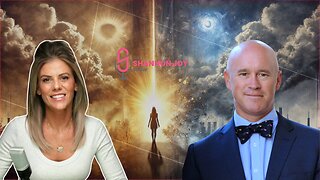Premium Only Content

MOON PHASE
1.New Moon: During this phase, the moon is located between the Earth and the Sun. The side of the moon facing Earth is not illuminated by the Sun, making it appear completely dark or invisible from our perspective. It's often difficult to see a new moon because it's in the same direction as the Sun in the sky.
2.Waxing Crescent: As the moon moves in its orbit, a small crescent of illumination becomes visible on its right side (in the Northern Hemisphere) over the western horizon after sunset. This phase is known as the waxing crescent. The illuminated portion gradually grows larger each night.
3.First Quarter (Half Moon): About a week after the new moon, the moon has completed roughly one quarter of its orbit around Earth. This results in the right half of the moon being illuminated, while the left half remains in darkness. This phase is often referred to as the first quarter or half moon.
Waxing Gibbous: Following the first quarter, the moon continues to wax, meaning it becomes increasingly illuminated each night. The waxing gibbous phase occurs as the illuminated portion grows larger, but it's not yet a full moon. The moon's brightness increases night by night.
Full Moon: About two weeks after the new moon, the Earth is positioned between the Sun and the moon. This results in the entire side of the moon facing Earth being illuminated by the Sun. The moon appears as a full, bright circle in the sky, and it's visible throughout the night, rising around sunset and setting around sunrise.
4.Waning Gibbous: After the full moon, the moon begins to wane, meaning its illuminated portion starts to decrease. The waning gibbous phase occurs as the illuminated part becomes smaller, but it's not yet a half moon.
5.Last Quarter (Half Moon): About three weeks after the new moon, the moon has completed roughly three quarters of its orbit. This leads to the left half of the moon being illuminated, while the right half remains dark. This phase is often referred to as the last quarter or half moon.
Waning Crescent: As the moon continues its orbit, the illuminated portion becomes smaller and takes on a crescent shape again, this time on the left side (in the Northern Hemisphere) over the eastern horizon before sunrise. This phase is known as the waning crescent.
6.The moon's phases repeat in a cyclical pattern, with each cycle taking approximately 29.5 days to complete. This period is known as a lunar month or synodic month. The changing appearance of the moon's phases is a result of its position relative to the Earth and the Sun, as well as the angle at which sunlight reaches its surface.
-
 LIVE
LIVE
The Shannon Joy Show
2 hours ago🔥🔥LIVE - Exclusive With Dr. David Martin On Flourishing Amidst Emerging Chaos. No One Is Coming To Save Us, Embracing FULL Truth The Only Way.🔥🔥
418 watching -
 LIVE
LIVE
Flyover Conservatives
11 hours agoThe Vatican, Schwab, Nazi’s and The EU — It’s All Connected with Mel K | FOC Show
416 watching -
 LIVE
LIVE
The Mel K Show
1 hour agoAllies or Adversaries? Global Alignment Shifts. Activist “Judges” Are National Security Threat!
671 watching -
 LIVE
LIVE
Benny Johnson
1 hour agoTrump to Re-Open ALCATRAZ, Nancy Pelosi FREAKS | President Announces 2028 Plan, Names Successors...
7,819 watching -
 1:12:01
1:12:01
The Big Mig™
5 hours agoTrump As Pope & President, Is It Ordained?
4.98K5 -
 LIVE
LIVE
LFA TV
14 hours agoLFA TV LIVE STREAM - MONDAY 5/5/25
4,035 watching -
 LIVE
LIVE
Blockchain Basement
1 hour agoDemocrat SABOTAGE Bitcoin Reserve! (Prepare For INSANE Volatility!)
35 watching -
 LIVE
LIVE
Caleb Hammer
1 hour agoFinancial Audit’s Most Toxic Guest
151 watching -
 36:46
36:46
Rethinking the Dollar
1 hour agoJune Meltdown? Apollo Sounds Recession Alarm | Morning Check-In
3322 -
 1:01:03
1:01:03
VINCE
4 hours agoPresident Trump Embarrasses NBC In Their Own "Interview" | Episode 36 - 05/05/2025
175K167